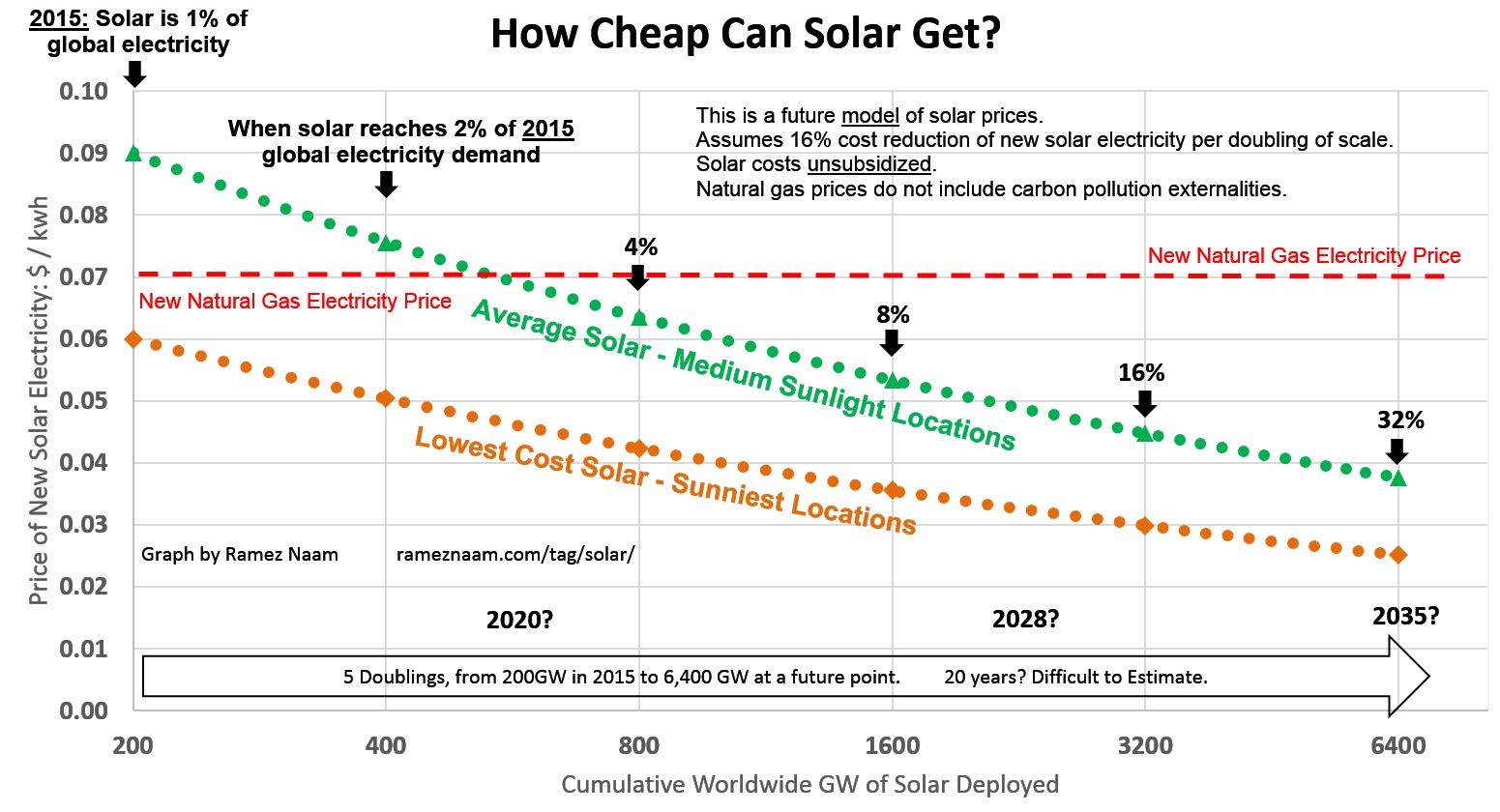High-placed utility executives have told me solar panels can’t get any cheaper. Here’s why economies of scale will continue to drive solar prices down, just like for Henry Ford’s Model T. There’s no excuse for new pipelines or nukes. Let the sun rise!
tl;dr: If current rates of improvement hold, solar will be incredibly cheap by the time it’s a substantial fraction of the world’s electricity supply.
Ramez Naam, on his blog, 10 August 2015, What’s the future price of solar?,
What this graph shows is that, if solar electricity continues its current learning rate, by the time solar capacity triples to 600GW (by 2020 or 2021, as a rough estimate), we should see unsubsidized solar prices of roughly 4.5 c / kwh for very sunny places (the US southwest, the Middle East, Australia, parts of India, parts of Latin America), ranging up to 6.5 c / kwh for more moderately sunny areas (almost all of India, large swaths of the US and China, southern and central Europe, almost all of Latin America).
And beyond that, by the time solar scale has doubled 4 more times, to the equivalent of 16% of today’s electricity demand (and somewhat less of future demand), we should see solar at 3 cents per kwh in the sunniest areas, and 4.5 cents per kwh in moderately sunny areas.
If this holds, solar will cost less than half what new coal or natural gas electricity cost, even without factoring in the cost of air pollution and carbon pollution emitted by fossil fuel power plants.
As crazy as this projection sounds, it’s not unique. IEA, in one of its scenarios, projects 4 cent per kwh solar by mid century.
Fraunhofer ISE goes farther, predicting solar as cheap as 2 euro cents per kwh in the sunniest parts of Europe by 2050.
These are all unsubsidized prices. And they don’t take into account energy storage. Nor, as Naam hints, do they take into account the massive disruption in other power sources that’s already happening: coal is crashing, new pipelines are meeting opposition everywhere, and the “nuclear renaissance” is dead.
So it’s not much of a stretch to predict that Naam is once again being too conservative. Solar prices will drop even faster than that, accelerating solar deployment, which is both of which are already going faster than predicted.
-jsq
Short Link:
